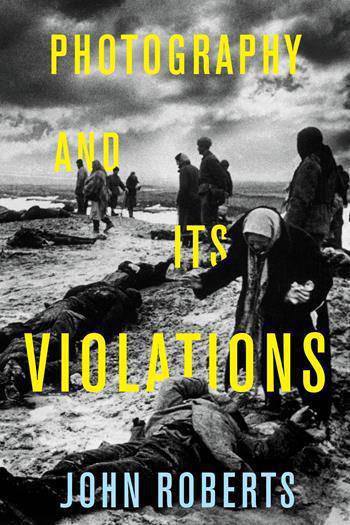Photography and Its Violations
Theorists critique photography for “objectifying” its subjects and manipulating appearances for the sake of art. In this bold counterargument, John Roberts recasts photography's violating powers of disclosure and aesthetic technique as part of a complex “social ontology” that exposes the hierarchies, divisions, and exclusions behind appearances. The photographer must “arrive unannounced” and “get in the way of the world,” Roberts argues, committing photography to the truth-claims of the spectator over the self-interests and sensitivities of the subject. Yet even though the violating capacity of the photograph results from external power relations, the photographer is still faced with an ethical choice: whether to advance photography's truth-claims on the basis of these powers or to diminish or veil these powers to protect the integrity of the subject. Photography's acts of intrusion and destabilization, then, constantly test the photographer at the point of production, in the darkroom, and at the computer, especially in our 24-hour digital image culture. In this game-changing work, Roberts refunctions photography's place in the world, politically and theoretically restoring its reputation as a truth-producing medium.
Данные книги
Нью-Йорк
2014
220 страниц
9780231168182
Доступ по запросу
Да
Да
770 Rob
1
- Framing the West: Race, Gender, and the Photographic Frontier in the Pacific Northwest2003
- Afghan Box Camera2013
- Фотовек. Очень краткая история фотографии за последние сто лет2002
- Фотография как...2016
- Ленинградский фотоандеграунд2007
- Лекции по истории фотографии2008
- Философия фотографии2005
- Субъектив. Фотограф о фотографии2006
- Московский фотоклуб «Новатор». Выпуск 7. 80-90‑е годы2021
- Фотовек. Очень краткая история фотографии за последние 100 лет2020
- Картомания. Невыдуманные рассказы из истории фотографии2019
- Art and Photography2003












